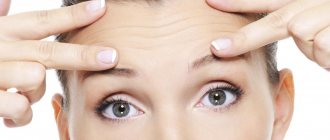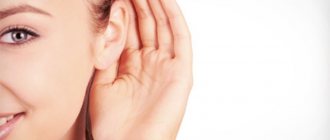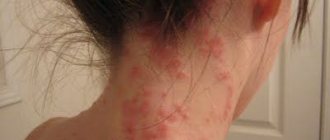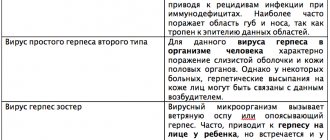Concept
Herpes is viral in nature and manifests itself in the form of water-filled blisters on the epidermis. Most often, herpes affects the lips and cheeks. Less commonly appears on the arms, back or genitals. The scalp is the least affected part. There are 7 known varieties of the herpes virus. Two of them can cause herpes capitis.
Risk groups for infection:
- People who have reached the age of 60–65 years. Women get sick more often, which is explained by hormonal changes in the female body (menopause, menopause).
- People with impaired protective functions of the body. These are HIV-infected people suffering from AIDS and autoimmune diseases. This form of the disease can be found even in a frequently ill child with serious health problems.
Causes
Herpes scalp can appear for two reasons:
- Infection through direct contact with a patient with an active form. Occurs through close contact with the hair of an infected person (using one comb). The greatest danger of infection is at stage 3 of the disease, when the blisters with their contents burst.
- Recurrence of chickenpox suffered in childhood.
Important! If it comes into contact with damaged areas of the skin (scratches, wounds, abrasions), the contents of herpetic vesicles can lead to infection of a healthy person.
Circumstances that contribute to the reactivation of the virus are:
- poor environmental conditions;
- bad habits;
- decreased protective function of the body;
- sedentary lifestyle, lack of physical activity;
- hypothermia or overheating;
- constant presence of the body in a stressful situation;
- weakening of the body after surgery.
2 of 7 viruses can cause herpes capitis:
- Type 1 virus. Infection occurs by airborne droplets. Most often it causes herpes on the lip, but there are cases where rashes appeared on the head. In this case, the virus affects the body only in the presence of microtraumas of the scalp. That is, for infection the patient must touch the affected area on the lip. Then to a wound or scratch on the scalp. Moreover, such a situation will not occur with good immunity.
- Virus type 3 (Varicella-Zoster virus). This is the causative agent of chickenpox. Having had it in childhood, the virus remains in the body in an inactive form.
General recommendations for a speedy recovery
Many patients are interested in whether it is possible to wash their hair if herpes has worsened? At the onset of illness, you should refrain from swimming. In special cases, washing with baby shampoo or other non-aggressive detergent that does not contain dyes or fragrances is allowed. Rubbing the scalp is prohibited. After washing, the hair is carefully dried with a towel, the wounds are treated with an antiseptic, and the towel is washed and dried.
In addition, it is recommended:
- If you have a rash on your head, comb your hair gently. Injury to the blisters leads to their infection and increased unpleasant symptoms.
- All family members should use separate towels, as the virus can be transmitted through any household items.
- Local antiviral drugs should be used from the very beginning of the disease, while the blisters are just beginning to form. In the future, it will not be possible to achieve a positive effect from such means.
- It is recommended to lubricate the formed crusts with sea buckthorn oil. It softens the skin and accelerates the process of tissue regeneration.
Stages and symptoms
The pathology occurs in 4 stages, each of which corresponds to certain symptoms:
- Initially, the scalp begins to itch, tingle, and painful sensations appear. Later the scalp turns red. The general condition of the patient is similar to the onset of a cold; the temperature may be elevated. Possible headache.
- After 12 hours, acute inflammation of the scalp begins. Bubbles filled with liquid (vesicles) appear, and over time the number of rashes steadily increases.
- The vesicles burst. The pain subsides.
- In place of the blisters, scabs form, which fall off on their own after a few days. This symptom indicates recovery.
After a month of the disease, the pathological process subsides. But if the patient’s immunity is weak, painful sensations along the affected nerves can persist for 1–2 months.
Herpes under the hair on the head: how to treat
Some people, when faced with strange rashes on their heads, panic. To recognize herpes - what kind of disease it is: how to treat it in the head, you need to consult a dermatologist. Only a specialist deals with these issues.
Herpes in the hair on the head is a pathology caused by a virus of the same name, which, penetrating into the cells of the human body, “integrates” into their genetic apparatus, provoking disturbances in metabolic processes. What does herpes look like on the head: photos are attached.
A person of any gender and age can get sick. Herpes occurs on the head of a child and a pensioner. This disease is quite common throughout the globe.
Some people are interested in whether there are herpes on the head? Pathology can affect almost all parts of the body. Herpes occurs on the back of the head. There are known cases when herpes forms on the temple.
Rashes can form anywhere, and scalp herpes is not a rare situation. When herpes is diagnosed on the scalp in the scalp, a photo of which can be seen below, then the treatment of this disease will be quite difficult.
If herpes appears on the head, treatment involves long-term therapy, since hair reduces the effectiveness of any medication. A person is infected with a strain of HSV-3 or Varicella Zoster.
It provokes herpes zoster on the scalp in adults, the treatment of which requires drug therapy. In children, this pathogen causes chickenpox.
Having had this disease once, the body develops lifelong immunity to it, although the virus itself remains forever in the plexuses of nerves. When the immune defense is weakened, it becomes more active, provoking an inflammatory process.
Today, even modern drugs are not able to completely rid a person of this harmful infection.
Only a set of health measures, which are prescribed to patients, helps to block the unpleasant symptoms of this disease. How to treat herpes in the hair on the head in order to alleviate the unpleasant condition, we will discuss in this publication.
Diagnostics
Detection of the virus in a medical facility is carried out in the following ways:
- Assessment of external signs and questioning of the patient.
- PCR analysis. The result of this test identifies the specific type of herpes virus. The study requires biological material from the patient. The contents of the blisters are taken for examination.
- Hybridization method. The goal is to determine the genome of herpes in cells.
- Linked immunosorbent assay. Detects the presence of antibodies to the virus.
Drug treatment
Therapy for herpes scalp is aimed at reducing the symptoms that accompany the course of the disease and fighting the virus. For this purpose, they most often use:
- Taking antipyretic drugs. These are drugs with paracetamol and ibuprofen that have an analgesic effect.
- Taking antiviral drugs - Vacyclovir, Acyclovir. The drugs are low toxic and have a selective effect. Taken orally in the form of tablets, used locally as an ointment.
- Treatment of affected areas with antiviral ointment - Gerpevir, Zovirax.
- At the stage when the bubbles with liquid burst, it is necessary to disinfect these areas. To do this, use hydrogen peroxide, then dry it with brilliant green. To speed up healing, treat with Streptocide or Panthenol.
- If crusts form at the site of the blisters, Erythromycin ointment will ensure speedy healing.
- For severe pain, you can apply pain-relieving patches and ointments based on lidocoine. It has a strong anesthetic effect and can relieve pain for 12 hours.
- Physiotherapy - ultraviolet light, quartz treatment - are effective in destroying the virus.
- For complex therapy, vitamin and mineral complexes and immunomodulators should be taken. This will help restore the body's weakened immunity.
Attention! If you have herpes on the scalp, it is not recommended to wash your hair frequently to avoid infection of healthy areas. For hair hygiene, it is better to use shampoos with a natural base, with a normal Ph level.
Folk recipes
Traditional medicine is used as an adjuvant therapy. To use such products, you need to consult a doctor. It is recommended to treat the rash elements with almond oil, Corvalol, and Valocordin. Plantain leaves are applied to the blisters. Such manipulations are done once a day.
Patients feel worse during the period of virus activity. In this case, lotions made from herbal decoctions help. Mint, lemon balm, and immortelle are used for preparation. Chamomile decoction helps with severe itching. Only a qualified specialist can undertake this method of treatment. In just 1-2 weeks, the symptoms of the pathology disappear.
Virus danger
Due to the similarity of the primary symptoms with a cold, the disease progresses and treatment does not begin. Seeking qualified help is observed only when obvious signs appear - rashes.
A prompt visit to a doctor will allow you to get rid of the disease within 5 days to a week. If you delay contacting a medical facility, treatment will take up to 2 weeks. To diagnose and treat herpes of the scalp, you should contact a therapist, dermatologist, or neurologist. You should seek help if you have the following symptoms:
- feeling of itching and burning on the head;
- headache and fever;
- weakness, apathy for food, nausea;
- inflammation of the lymph nodes;
- the appearance of even small ulcers on the back of the head and temples (they can merge into a single whole).
It is not recommended to postpone a visit to the doctor, since the pathology is potentially dangerous for other organs and systems. This can lead to the following complications:
- Localization of the virus on the scalp is dangerous due to its proximity to the brain. If it enters the brain, it causes menengoencephalitis.
- The virus can lead to pneumonia.
- If the virus spreads to the ears or eyes, the patient may become blind or deaf.
- Herpes of the head can lead to radiculitis, infertility, liver damage, and other chronic pathologies.
- Pathology often leads to complications in the form of severe headaches.
- The virus embeds itself in nerve endings. When an entire nerve becomes inflamed, facial muscles may become paralyzed or their motor activity may be impaired.
Watery blisters on the skin of an adult: photos, causes and treatment methods
Watery blisters on the skin surrounded by redness can occur for no apparent reason. But they should be regarded as a signal from the body about the disease. This is a serious reason to see a doctor.
Types of watery blisters
A blister is a cavity that is formed as a result of acute inflammation of the skin. The entire space is filled with a clear serous fluid (serum), sometimes mixed with blood.
Depending on the root cause, bubbles appear singly or in groups. They can rash locally in a certain area and generalized - from the head to the feet.
Blisters with fluid on any part of the body are distinguished by type:
- vesicles - small formations up to 5 mm,
- bullae - single or multi-cavity large blisters measuring 10 mm or more,
- pustules are cavities with purulent contents.
The rash is small and round in shape; large bullae may be asymmetrical.
Causes
Factors that cause blisters on the skin and how to deal with them
Skin rashes in the form of blisters with liquid appear in adults as a reaction to the influence of negative factors from within the body or from the external environment.
The cause may be rubbing with clothing, kitchen utensils, garden tools, thermal and chemical burns. But the most serious group is disorders of the functioning of organs and systems of an immune, metabolic, and nervous nature.
Internal imbalance becomes the background for diseases of various etiologies.
Contact dermatitis
Skin irritation occurs due to contact with certain substances, for example:
- household chemicals, especially alkaline,
- hygiene, cosmetic products,
- medications,
- metals,
- synthetics,
- plants,
- animals, insects.
Even uncomfortable air or water temperatures can cause blisters on sensitive skin. Redness, swelling, itching, burning of the epidermis are the first signs of an impending rash.
Small transparent bubbles grow into large bullae. They quickly burst and dry out. If contact with the irritant is interrupted quickly, everything will be limited to slight redness, which will soon resolve.
In severe cases, weeping, poorly healing areas of erosion are formed.
Allergic dermatitis
Allergic blisters on the skin: causes, types, methods of treatment
A malfunction of the immune system leads to the fact that the body perceives foods, drinks, and medications that are generally harmless as dangerous to health. As a result, a reaction of rejection occurs - inflammation of the skin, profuse dry and watery rashes like urticaria on the face, hands, folds, and legs.
Toxicoderma
The cause of toxic-allergic inflammation of the skin is considered to be medicinal, food, and chemical irritants that a person has eaten, inhaled, or received through an injection.
Individual intolerance in the form of a reactive rash and eczema can manifest itself to any group of medications, 120 types of food allergens, and metals in production (nickel, cobalt, chromium). Symptoms of toxicoderma disappear in the absence of the action of the irritant and quickly return when the slightest dose enters the body.
Bacterial infection
Bacteria such as streptococci and staphylococci provoke diseases with vesicular and pustular rashes:
- pyoderma - purulent inflammation of the epidermis,
- vulgar mixed impetigo - a rash of phlyctenas (bubbles) with purulent filling and rough crusts hiding erosions,
- ecthyma is an inflammatory-purulent process in which conflicts deepen erosion over the entire thickness of the skin.
Viral infection
Scatterings of small blisters often turn out to be a manifestation of herpes infections - chickenpox, shingles. Herpes virions are usually transmitted by airborne droplets.
Chickenpox, which is easily experienced by children, causes a lot of suffering in adulthood . The pink spots that appear at the first stage are covered with itchy and painful vesicles.
The blisters burst, revealing wet ulcers. Before the wounds have time to become covered with crusts, more and more lesions appear. Chickenpox brings high fever, chills, loss of appetite and sleep.
Scratching can introduce purulent bacteria into the wounds.
Herpes zoster is especially difficult. Thick blistering rashes in bands are located along the line of nerve fibers affected by herpes virions. Severe neuralgic pain haunts the patient not only in the acute phase of pathogenesis, but also many months later.
Fungal infection
Various fungi constantly parasitize human skin. Their pathogenic activity is restrained by the immune system. Depletion of protective resources and skin injuries create favorable conditions for the activation of mycotic diseases. The trichophyton fungus causes small blisters between the toes of very sweaty feet, which quickly grow into bullae.
Flaky epidermorphyton provokes large blisters on the palms, groin, and armpits. Less commonly, the middle or ring fingers are affected.
The bubbles quickly flatten in the center, leaving a convex, peeling border around the perimeter.
Dermatophyte molds can spread to areas containing keratin: the hairy area, the stratum corneum of the epidermis, and nails. A clear example of rashes can be seen in the photo below.
Mycoses respond more quickly to treatment, since the lesions are superficial, and medications act directly on the fungus.
Diseases of the nervous and endocrine system
Depression and stress, thyroid dysfunction, diabetes mellitus disrupt the passage of electrical impulses, metabolism and hormonal control of all processes in the body. All this negatively affects the condition of the protective skin barrier. The epidermis changes its physical and chemical structure, resulting in various types of water blisters.
Autoimmune pathologies
Diseases that arise due to the aggression of protective bodies against protein compounds of the body are called autoimmune.
- In old age they suffer from chronic bullous pemphigoid. The skin on the arms, legs, and stomach is covered with blisters that are filled to the limit. The foci of their accumulation are located symmetrically.
- A recurrent disease, dermatitis herpetiformis, causes high fever, disrupts intestinal functions, and leads to depression. A polymorphic rash (various in contours and size) appears on the knees, elbows, from the back of the head to the buttocks. The unbearable itching is accompanied by a feeling of burning, tingling, and crawling. Dühring's dermatitis may indicate a malignant tumor within the body.
- Pemphigus is less common, but is more severe. Its multiforme vesicles sprinkle the body, quickly merging into extensive foci.
Possible complications of the disease
In the absence of proper treatment and hygiene, watery blisters of any nature become contaminated with purulent bacteria. Deep, weeping, non-healing ulcers form.
Infectious rashes tend to spread throughout the skin, spreading to the mucous membranes of the mouth, eyes, genitals, and penetrating the ears. The patient is unable to eat, drink, or sleep normally. The swelling blisters dehydrate the tissue. Toxins of viruses, bacteria, fungi poison the blood and internal organs.
In severe pathogenesis, the body is exhausted, the nervous system is depressed, and the immune system is suppressed to an extreme degree. Medicine is powerless in this case.
Treatment methods
Many types of blistering rashes are idiopathic, meaning their causes are unknown. Therefore, there are practically no specific drugs. Treatment is selected according to symptoms, taking into account the general condition of the body .
Medicines in the treatment of rashes
First of all, surface preparations are used in the form of ointments, gels, and creams.
- Ointment with zinc oxide disinfects, prevents suppuration, dries weeping, and softens inflamed skin.
- Lamisil, Clotrimazole, Diflucan in ointment form, Pimafucin cream have a depressing effect on fungi.
- Antibacterial ointments Triderm and Baneocin help cure streptoderma.
- To neutralize severe allergies due to contact dermatitis and toxicoderma, hormonal ointments Advantan and Sinaflan are used.
It is very difficult to treat herpes rashes. A complex of analgesics, antihistamines, and anti-inflammatory drugs is selected.
The basis of therapy is broad-spectrum antiviral drugs:
- Valtrex,
- Valaciclovir,
- Acyclovir,
- Famvir.
In severe cases of the disease, immunomodulators are included in the course of therapy.
Folk remedies
Home treatment for blisters on the skin, as one of the methods of complex therapy, should be selected by a doctor.
- 15-minute baths with the addition of decoctions of chamomile flowers, marigolds, celandine herbs, St. John's wort, and plantain to warm water will disinfect, dry, and accelerate the healing of blisters on the hands and feet. They are made at night. To prepare the decoction, pour 4 tablespoons of plant material into a liter of boiling water and keep in a water bath for 10-12 minutes. After cooling, filter and add to water.
- The inflamed epidermis is soothed with freshly squeezed juice of aloe, celery, and grapes.
- Natural oils from peach, apricot, almond kernels, and olives nourish diseased skin with vitamins, microelements, and soften its structure.
Equally important in the treatment process is drinking plenty of fluids, diet, and giving up bad habits.
Assess your chances against coronavirus. Take our test
Attention!
The site administration advises you not to self-medicate, and in any controversial situations, consult a doctor.
Source: https://fr-dc.ru/kozhnye-zabolevaniya/pochemu-na-kozhe-poyavlyayutsya-vodyanistye-puzyrki-i-kak-ot-nih-izbavitsya
Pityriasis versicolor
Pityriasis versicolor is a chronic dermatosis of fungal etiology that affects only the top layer of the skin. This form of lichen is also called lichen versicolor because it is characterized by the appearance of spots of various colors (from pale pink to dark brown).
The spots are covered with small scales that appear when scratching the affected areas. The lesions have clear edges, but tend to merge to form large areas of damaged epidermis. The disease is accompanied by itching and increased sweating.
It is diagnosed using an iodine test, skin scraping microscopy and under a Wood's fluorescent lamp.
Treatment occurs by prescribing antifungal ointments, and in severe cases, antifungal antibiotics. Among the traditional methods of treatment, calendula tincture, onion juice, and hellebore water are widely used.
Pityriasis versicolor affects only the top layer of skin
How to treat?
To get rid of blisters on the head, you need to approach its solution comprehensively. You should start by giving up bad habits and switching to proper nutrition . Eliminate contact with all possible allergens and cure long-standing diseases : hormonal disorders, gastritis, and so on.
ATTENTION : Avoiding fatty, fried and smoked foods and consuming plenty of vegetables and fruits will help defeat blisters on the head. Whole grain cereals will also become a faithful ally in this fight. Such a diet will help normalize metabolism - there is a possibility that as a result of this, acne will go away on its own and will not appear again.
Proper hygiene will help in getting rid of this unpleasant problem. Properly selected shampoo, medicated oils and capsules will provide care to the scalp. You can treat blisters on your head in your hair yourself using pharmaceutical or folk remedies.
Pharmacy methods
Many people turn to pharmaceutical products to get rid of blisters on their heads.
This is a well-trodden path that allows you to quickly achieve a good result.
As a last resort, even antibiotics , which can be used locally or internally (if the disease is caused by a bacterial infection).
The doctor prescribes medications, and he may also advise you to take vitamins, antifungal or antiallergic medications, hormonal and anti-anxiety pills. But if we are talking about external treatment, then the following means are used:
- drying ointments, for example, ichthyol or Levomekol;
- alcohol solutions: calendula tincture, salicylic acid, etc.;
- tar soap;
- antifungal shampoos.
The treatment process is as follows:
- You need to wash your hair with a special shampoo.
- We treat the skin around each pimple with a weak alcohol solution. We do this extremely carefully so as not to get burned.
- Apply ointment to the skin in small portions. Make sure your hair is completely dry before starting this procedure.
These points may vary depending on the specifics of the disease.
Self-removal of ulcers
First, a person must pay attention to his diet. Most often, the disease appears in those who love sweets, so it is necessary to reduce the absorption of sweet foods. Avoid drinking coffee, alcohol, smoked and salty foods.
The components of such products activate the sebaceous glands. As a result, pores become clogged. Inflammation appears, appearing in the form of ulcers. By adhering to proper nutrition, you can improve your gastrointestinal tract. The result will be the elimination of acne and pimples.
For small ulcers, tar soap is used. Thanks to it, the skin is cleansed. During the procedures there will be no drying or irritation, but, on the contrary, blood circulation will improve and wounds will heal. A proven method is to use a hot salt bath with sulfur.
What should you not do?
Do not self-medicate unless you are sure that your problem is purely cosmetic. Be careful with alcohol solutions - they can burn your scalp.
Do not prescribe antibiotics yourself: this is fraught with much more serious health problems than acne. And, of course, under no circumstances squeeze blisters out of your hair!
This will only damage your skin and make the problem worse.
How do sores on the head appear?
Sores on the head appear in the form of red crusts, small bumps, bleeding ulcers, dandruff, purulent pimples, neoplasms covered with white scales, spots or nodes of various sizes and shapes.
Their appearance may be accompanied by itching, or may be asymptomatic.
But it is important to understand that such formations are not just cosmetic or hygienic defects, they can be manifestations of a wide variety of diseases.
Psoriasis is a non-infectious skin disease of an autoimmune nature.
Which doctor can help?
If your scalp does not clear up after using the methods described, you should consult a doctor. With this problem you need to go to a professional dermatologist - he will conduct tests and give a verdict.
REFERENCE : A dermatologist is a highly specialized doctor who treats skin diseases.
However, treating blisters under the hair is not limited to visiting a single specialist. Most likely, you will have to visit a therapist, neurologist, endocrinologist and allergist.
You can read about the types of inflammation on the body on the hiring website, as well as about treatment methods. Among other things, we bring to your attention the following articles:
- is it possible to pierce them;
- blisters with fluid;
- treatment of a burn with a blister;
- cases of frostbite;
- appearance after wart removal;
- and also what to do if you itch and treatment for burns.
Prevention
Measures to prevent infection with the disease are aimed at strengthening the immune system and overall health. To achieve these goals, you must adhere to the following rules:
- Complete and balanced nutrition. Be sure to eat food that is steamed, boiled or in the oven. Eat vegetables and fruits, fresh fish and lean meats.
- Elimination of bad habits.
- Avoiding the use of common household items when visiting public places (baths, saunas, swimming pools, etc.).
- Maintaining a physically active lifestyle, walking in the fresh air, swimming, exercise.
The danger of scalp herpes lies in the risk of the virus infecting important organs and systems of the human body. This can lead to chronic illness, even loss of important life functions. Infection with a virus or activation of a virus already present inside the body occurs due to reduced immunity. Therefore, in order to avoid infection and relapse of the disease, it is important to increase the body’s protective functions.
Conclusion
If you decide to use traditional methods, then they are most effective in the absence of infectious and fungal diseases. By themselves, they relieve inflammation, especially with burns and allergic reactions, but with fungal diseases they can contribute to the spread of infection.
Blisters should never be scratched or pressed. You should also limit your intake of fatty and spicy foods so as not to stimulate the sebaceous glands. And remember, the sooner you see a doctor, the more effective the treatment will be.
source










